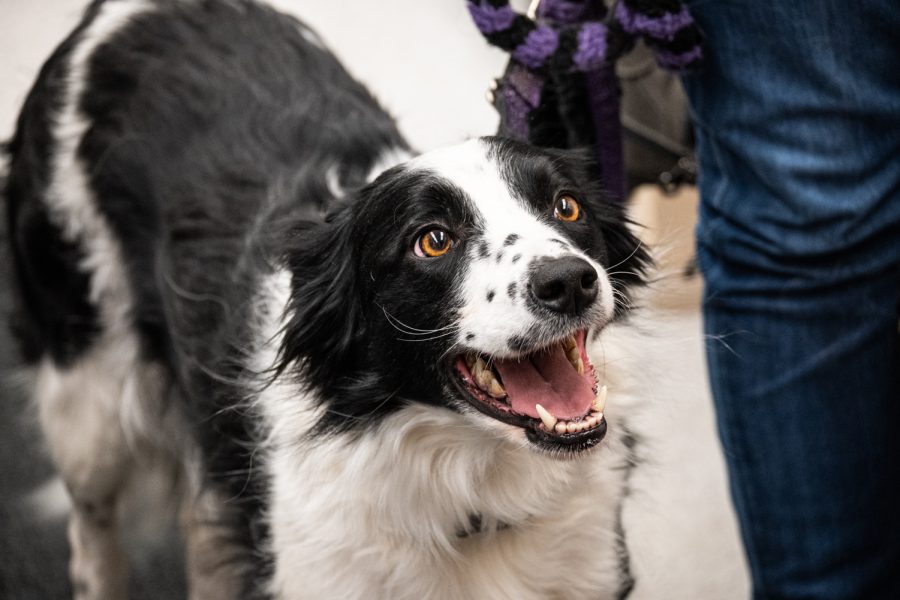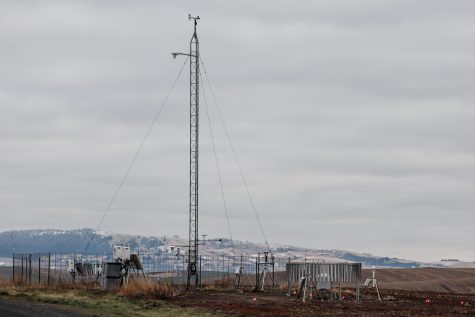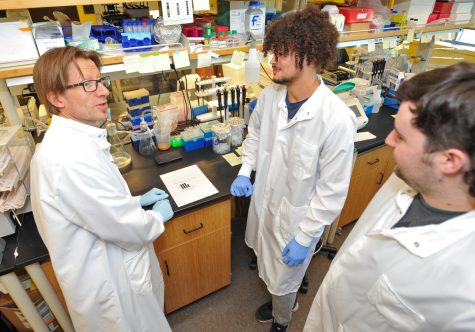Research tackles injury in agility dogs
Underrepresented field addressed by WSU professors
Calamity Jane, a 3-year-old border collie, practices agility exercises, Feb. 24.
March 3, 2022
Researchers from WSU and University of California-Davis collaborated on a study to establish a correlation between risk factors and injury trends in agility dogs.
Agility dog sports involve a handler guiding dogs through a series of obstacles, including jumps, tunnels and climbs, said Debra Sellon, WSU professor of equine medicine.
“It is a speed and accuracy type of competition,” Sellon said. “Any breed can do it. You can get qualifying scores and get titles and even become a master champion without being the fastest dog out there.”
She said this research is important because agility dog medicine is underrepresented.
“When I try to find out what’s the best treatment and what’s the likelihood after treatment that my dog will ever be able to compete again, we have very few of those answers,” she said.
The researchers specifically looked into ruptures of the cranial cruciate ligament (CCL). This is similar to the anterior cruciate ligament (ACL) in humans, where common injuries take place during sports, said Denis Marcellin-Little, professor of orthopedic surgery at UC Davis.
A ligament is a tight band of supportive tissue. There are two ligaments that form a cross, which is why they are called the cruciate ligament. The cranial cruciate ligament is toward the front of the dog, Marcellin-Little said.
He said the dog’s age, weight and body shape, as well as factors like the sports the dog participates in, all correlated with risk for injury.
“Some sports [increase] the likelihood of injury, like flyball, and some sports [decrease] the likelihood of injury, like dock diving and nose work,” he said.
The structure of the dog influences how the injury occurs, said Jessica Bunch, assistant professor in the WSU integrative veterinary department.
While both dog and human athletes injure their cruciate ligaments through force, for dogs the injuries are more likely to occur as a degenerative process of wear on joint structures. While humans stand upright, dogs stand in a flex position that puts strain on their CCL, Bunch said.
Dogs with straighter limbs and posture put more strain on their cruciate ligaments and increase the wear — this increases the risk for injury, she said. Dogs with more angular limbs in their structure put less wear on their cruciate and are at less risk for injury.
She said that a strong core relates to good fitness because it helps stabilize movement and prevent injury.
Marcellin-Little said having good balance and athleticism allows dogs to practice good body control and prevent movements that could injure their ligaments.
“If you’re more athletic, you’re more precise with your movement,” he said. “You are probably gonna be a little wiser with where you put your foot and where the rest of your body is, and you’re not gonna stretch your ligaments as much.”
Bunch said core exercises do not directly translate to dogs because they stand on four legs. Therefore, they work on exercises that train the dog’s balance to engage and strengthen the core. They have to consider underlying structural problems with the dogs to decide the best exercises.
“Begging is actually a really good core exercise as long as their knees and hips and lower back are okay,” she said. “Other exercises, like where they have to balance on two legs, [the dog] will lift up one hind leg and one front leg … almost like some yoga poses, that’s actually core strengthening too.”

One balance exercise for agility dogs is balancing on a platform or a BOSU ball.
These researchers said they speculate their findings can be applied toward dogs other than agility dogs, though the study did not cover any other breeds.
“You could be a working dog, working on a farm, and you are doing agility, so the findings of this study would apply to some working dogs. You have to look at the situation specifically,” Marcellin-Little said.
Bunch said dogs other than agility dogs can still be active and athletic. The results of this study may still apply to them.
Marcellin-Little said this data collection is only the beginning. While a correlation between risk of injury and core strength has been established, the link between the two is still not entirely understood.
This research will be expanded upon by the Agility Dog Health Network, a new and growing coalition of researchers interested in dog sports medicine, Sellon said.
“We just completed a survey of agility competitors [to ask] what they think are the most important health problems [for dogs], and we’re looking through that data now,” she said. “We hope to have a lot of projects with a lot of people involved very soon.”

















